Deborah J. Ross's Blog, page 15
November 17, 2023
Short Book Reviews: Louisa Morgan's Powerful Take on Ghosts, Abuse, and Friendship
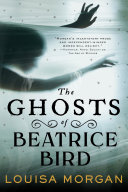 Louisa Morgan is a writer of astonishing depth and power.Now she brings her superb talents to a modern tale of abuse, friendship, andhope.
Louisa Morgan is a writer of astonishing depth and power.Now she brings her superb talents to a modern tale of abuse, friendship, andhope.Clinical psychologist Beatrice Bird has always had a touchof “second sight,” a benign and occasionally useful talent for lucky guesses. Animpulsive experiment with psychedelics during the Haight-Ashbury era transformsher intuitive gift. Now she sees ghostly figures attached to living people,embodiments of abuse, terror, and guilt. As the years pass, thesemanifestations become increasingly difficult to endure. She flees to a remoteisland community, where her only social contacts are a few nuns and a pair of opinionatedcows. Just as she settles in to a life of isolation, her life collides withthat of another refugee. Timid Anne Iredale is clearly on the run, willing togo to any lengths to hide her identity as the wife of a powerful judge.Beatrice’s gift, however, reveals the most horrific phantoms yet: a mewlingchild clinging to Anne and a specter of unalloyed evil looming over them both.Soon the two are thrown together on a journey of courage, healing, andredemption.
Morgan tackles complex and difficult issues with compassion,intelligence, and page-turning drama. The story unfolds like a spiral, circlingthrough two very different lives, past and present, peeling away layers of illusionand façade until they are woven together in a triumphant, deeply moving unity.Clear your schedule before opening this book, because once you start reading,you won’t want to put it down!
November 13, 2023
Planets and Nebulae and Stars, Oh My!
An embarrassment of riches of science articles:

Want to Find Life? Compare a Planet to its Neighbors
With thousands of known exoplanets and tens of thousands likely to be discovered in the coming decades, it could be only a matter of time before we discover a planet with life. The trick is proving it. So far the focus has been on observing the atmospheric composition of exoplanets, looking for molecular biosignatures that would indicate the presence of life. But this can be difficult since many of the molecules produced by life on Earth could also be produced by geologic processes. A new study argues that a better approach would be to compare the atmospheric composition of a potentially habitable world with those of other planets in the star system.
Since planets form within the debris disk of a young star, they will generally have similar compositions. Because of the migration of certain molecules such as water ice, the outer planets can have a slightly different composition than the inner planets, but overall their composition is similar. For this study, the team looked at the abundance of atmospheric carbon among worlds.
Carbon is not just a primary element for life on Earth, it also absorbs readily in water and can be bound geologically in rocks. So the idea is that if an exoplanet is in the potentially habitable zone of a star and has significantly less atmospheric carbon than similar worlds in its system, then that is a strong indicator of the presence of water and organic life. Take our solar system as an example. Earth, Venus, and Mars are all roughly in the habitable zone of the Sun, but both Venus and Mars have atmospheres comprised mostly of carbon dioxide. In contrast, Earth has an atmosphere of mostly nitrogen and oxygen, and only a fraction of a percent of carbon dioxide. Earth’s atmospheric carbon is so dramatically different from that of Venus and Mars that it stands out as a likely inhabited world.

The Crab Reveals Its Secrets To JWST
The Crab Nebula – otherwise known as the first object on Charles Messier’s list of non-cometary objects or M1 for short
It has been known that there is a pulsar at the core of the nebula, and it’s this pulsar that is the true remains of the progenitor star. When it went ‘supernova,’ the core collapsed to form the ultra-dense rotating object that, if you happen to be in the right place in space (hey, that rhymes), then you will see a pulse of radiation as it rotates. The infrared images from JWST reveal synchrotron emissions, which are a direct result of the rapidly rotating pulsar. As the pulsar rotates, the magnetic field accelerates particles in the nebula to astonishingly high speeds such that they emit synchrotron radiation. As a fabulously lucky quirk of nature, the radiation is particularly obvious in infrared, making it ideal for JWST.

Uranus Has Infrared Auroras, Too
Auroras happen when charged particles in the solar wind and near-planet environment get trapped by a planet’s magnetic field. They funnel down to the atmosphere and collide with gas molecules. This happens on Earth and we see auroras over the north and south poles of our planet. They also happen at other planets. Astronomers detect them on the other giant planets, and a smaller version of them occurs on Mars. Venus probably doesn’t experience similar types of auroral displays, since it has no intrinsic magnetic field. However, it may experience something like them during particularly gusty solar wind events. At the outer planets, the gas mix is different in the atmospheres. That means their aurorae show up in ultraviolet and infrared wavelengths.
Uranus has an interesting magnetic field. It does not originate from the exact center of the planet. It’s also offset by 59 degrees from the rotation axis. That’s tipped 90 degrees from the plane of the solar system. This arrangement means that the Uranian magnetosphere is asymmetric and its field strengths vary depending on location. It connects with the solar wind once every Uranian day (which is 17 hours long). The planet does show some auroral activity, particularly around the poles and Hubble Space Telescope detected some in 2011

Three Planets Around this Sunlike Star are Doomed. Doomed!
According to new research we can start writing the eulogy for four exoplanets around a Sun-like star about 57 light years away. But there’s no hurry; we have about one billion years before the star becomes a red giant and starts to destroy them.
The star is Rho Coronae Borealis, a yellow dwarf star like our Sun. It’s in the constellation Corona Borealis, and has almost the same mass, radius, and luminosity as the Sun. The difference is in their ages. The Sun is about five billion years old, but Rho CrB is twice that, which means its red giant phase is imminent, at least in astrophysical terms.
Post main sequence stellar evolution can result in dramatic, and occasionally traumatic, alterations to the planetary system architecture, such as tidal disruption of planets and engulfment by the host star,” Kane writes. Rho Coronae Borealis is both old and bright, making it “… a particularly interesting case of advanced main sequence evolution,” according to Kane. Not only because its similar to the Sun and easily observed, but also because it hosts four exoplanets.
 White Dwarfs Could Support Life. So Where are All Their Planets?
White Dwarfs Could Support Life. So Where are All Their Planets?Astronomers have found plenty of white dwarf stars surrounded by debris disks. Those disks are the remains of planets destroyed by the star as it evolved. But they’ve found one intact Jupiter-mass planet orbiting a white dwarf.
Are there more white dwarf planets? Can terrestrial, Earth-like planets exist around white dwarfs?
A white dwarf (WD) is the stellar remnant of a once much-larger main sequence star like our Sun. When a star in the same mass range as our Sun leaves the main sequence, it swells up and becomes a red giant. As the red giant ages and runs out of nuclear fuel, it sheds its outer layers as a planetary nebula, a shimmering veil of expanding ionized gas that everybody’s seen in Hubble images. After about 10,000 years, the planetary nebula dissipates, and all that’s left is a white dwarf, alone in the center of all that disappearing glory.
White dwarfs are extremely dense and massive, but only about as large as Earth. They’ve left their life of fusion behind, and emit only residual heat. But still, heat is heat, and white dwarfs can have habitable zones, though they’re very close.
Astronomers are pretty certain that most stars have planets. But those planets are in peril when they orbit a star that leaves the main sequence behind and becomes a red giant. That can wreak havoc on planets, consuming some of them and tearing others apart by tidal disruption. Some white dwarfs are surrounded by debris disks, and they can only be the remains of the star’s planets, ripped to pieces by the star during its red dwarf stage.
But in 2020 researchers announced the discovery of an intact planet among the debris disk in the habitable zone around the white dwarf WD1054-226. If there’s one, there are almost certainly others out there somewhere. Why haven’t we found them? And does the fact that the first one we’ve found is a Jupiter-mass planet mean the WD exoplanet population is dominated by them?
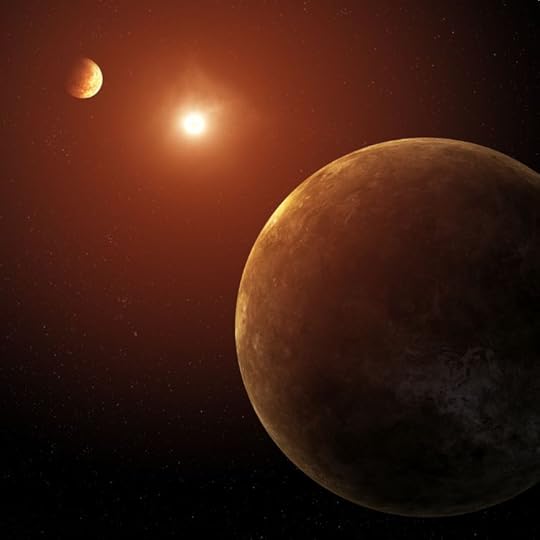
Old Data from Kepler Turns Up A System with Seven Planets
NASA’s Kepler mission ended in 2018 after more than nine years of fruitful planet-hunting. The space telescope discovered thousands of planets, many of which bear its name. But it also generated an enormous amount of data that exoplanet scientists are still analyzing.
Kepler 385 is similar to the Sun but a little larger and hotter. It’s 10% larger and about 5% hotter. It’s one of a very small number of stars with more than six planets or planet candidates orbiting it.
The two innermost planets are both slightly larger than Earth. According to the new catalogue, they’re both probably rocky. They may even have atmospheres, though if they do, they’re very thin. The remaining five planets have radii about twice as large as Earth’s and likely have thick atmospheres.
November 3, 2023
SFWA's Statement on Artificial Intelligence
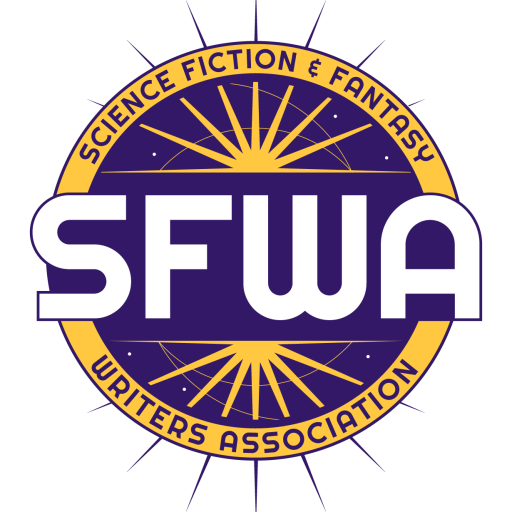
On October 30, the SFWA Board and the SFWA Legal Affairs Committee sent the following letter to the US Copyright Office in response to their August 2023 Notice of Inquiry regarding copyright law and policy issues in artificial intelligence, which is part of their AI Initiative.
We are aware that there is a wide range of opinion on the subject within our community, but the issues of known damage to fiction marketplaces and threats to original IP copyrights that these new AI tools pose must be made known to bureaucrats and lawmakers recommending and making policy. By doing so, when consensus emerges about the proper use of generative AI in art, we can ensure that such AI is created and utilized in a way that respects the rights of creative workers.
In the near future, we’ll have the opportunity to read other letters submitted to this call for comments, and both SFWA and individuals will be able to review them and respond. We invite all our members, but especially those writers working in gaming and comics, to make known the effects you are seeing of artificial intelligence on your careers, for good or ill.
We will continue to study this issue and speak up where we feel we can do good. The more we learn from our membership, the more effective we will be.
The SFWA Board
TEXT OF LETTER
The Science Fiction and Fantasy Writers Association (SFWA), formerly Science Fiction and Fantasy Writers of America, is a 501(c)(3) nonprofit organization whose mission is, in part, to support, defend, and advocate for writers of science fiction, fantasy and related genres. Formed in 1965, SFWA currently has over 2,500 commercially published writers in those genres across various types of media. Its membership includes writers of both stand-alone works and short fiction published in anthologies, magazines, and in other media. SFWA is not a subsidiary of any other entity. SFWA has no subsidiaries or other ownership interest in any other organization that may be affected by the Copyright Office’s policies on AI.
It is in that capacity that we write this letter in response to the Copyright Office’s call for comment on issues raised by artificial intelligence systems. As creative writers who have long had an eye on the future, we are no strangers to the concept of artificial intelligence; indeed, the work of our members is frequently mentioned by the people who over the years have made progress in that field. We have long anticipated these developments and have thought deeply over the years about its promise and pitfalls. With this in mind, it is with much regret that we cannot yet speak in favor of using AI technology in the business of creating art.
The current crop of artificial intelligence systems owes a great debt to the work of creative human beings. Vast amounts of copyrighted creative work, collected and processed without regard to the moral and legal rights of its creators, have been copied into and used by these systems that appear to produce new creative work. These systems would not exist without the work of creative people, and certainly would not be capable of some of their more startling successes. However, the researchers who have developed them have not paid due attention to this debt. Everyone else involved in the creation of these systems has been compensated for their contributions—the manufacturers of the hardware on which it runs, the utility companies that generate their electrical power, the owners of their data centers and offices, and of course the researchers themselves. Even where free and open source software is used, it is used according to the licenses under which the software is distributed as a reflection of the legal rights of the programmers. Creative workers alone are expected to provide the fruits of their labor for free, without even the courtesy of being asked for permission. Our rights are treated as a mere externality.
Perhaps, then, creative workers uniquely benefit from the existence of these artificial intelligence systems? Unfortunately, to date the opposite has been the case: SFWA has thus far seen mainly harm to the business of writing and publishing science fiction and fantasy as a result of the release of AI systems.
For example, short fiction in our genres has long been recognized as a wellspring of the ideas that drive our work as well as inspiring works in film, games, and television. Writers in our genres rely on a thriving and accessible landscape, which includes online and paper magazines. Part of the success of these publications depends on an open submission process, in which writers may submit their stories without a prior business relationship. This has frequently served as a critical opportunity for new and marginalized authors to have their voices heard.
Over the last year, these venues, particularly the ones that pay higher rates for stories, have been inundated with AI-written stories. The editors uniformly report that these submissions are poorly conceived and written, far from being publishable, but the sheer volume materially interferes with the running of these magazines. Once submission systems are flooded with such content, it takes longer to read and reject a submission than it took someone to have an AI produce it in the first place. Every submitted work must be opened and considered to verify that the writers for whom the system was originally designed are not missed or forgotten.
This amounts to a denial-of-service attack against a critical part of our community: at best, authors wait longer for the attention of a more-hurried editor; at worst, we fear that valued markets may be forced to close their doors to unsolicited submissions. As more and more users of AI hear about potential get-rich-quick submission schemes, this problem will only grow worse. Significantly, the harm to our marketplace will fall hardest on new and marginalized authors.
Likewise, novelists have reported to SFWA that their work has been increasingly crowded out in online marketplaces such as Amazon, where there is a well-known issue of large numbers of AI-generated book-length works for sale. In this case the market itself becomes clogged with AI-written books that are posted in the hopes of playing Amazon’s algorithms to lure readers into careless or adventurous spending, leaving those readers less able to find real writers’ work and less willing to take a future chance. Again it is new and marginalized authors without name recognition who will suffer most from the significant rise in noise in the marketplace, but even established authors are seeing AI-generated counterfeit works appear under their names.
In addition, we have received reports of AI systems trained on copyrighted material being induced to produce material that would be a violation of the original creators’ rights to license derivative works. The background and setting of science fiction and fantasy books are uniquely copyrightable and suited to derivative works that may not even copy the characters, but only the world in which the story takes place. It is common for science fiction and fantasy authors to license these worlds to other authors or publishers as derivative works. AIs have been documented being used without permission to produce putative prequels or sequels to copyrighted works using these derivative elements, for example, or to provide quotes from books.
AI does not uniquely enable such violations, of course; the potential harm is that what can be done on purpose can be done by accident. It seems entirely plausible for someone to generate text from an AI for use in their own creative work that violates the rights of another author. They would then publish the resulting work or seek copyright registration without ever understanding that their work infringes on the rights of others. Should this become common, the courts would likely become increasingly full of litigation to protect original intellectual property, at considerable cost and chilling effect.
Clearly, we are only experiencing the beginning of a potentially devastating process for both creators and consumers alike.
Even if at some point in the future as AI becomes more sophisticated, these ersatz books and stories become acceptable to human readers, that will be wholly because of the copyrighted material that these systems have copied and ingested. If they have any value at all, it will be due to the work of creators that has been taken without permission or compensation, and turned to a use that harms the ability of those creators to ply their trade. This state of affairs cannot stand.
The Copyright Office is rightly concerned with the details of the registration process and how AI generated writing should be treated by the law. We agree wholeheartedly that AI-generated works should be uncopyrightable and the Office should refuse to register such works. To promote the progress of science and the useful arts, that line must be held.
We are forced to conclude, however, in the light of the harms listed above, that existing policy is not sufficient. Lack of copyrightability has not prevented marketplaces from being flooded with counterfeit fiction. Treating AI-generated text as legally on par with public domain work ignores the possibility that it in fact inadvertently contains infringing elements placed there by a machine seeking only to respond to a prompt and not concerned with rights.
It must also be considered that AI systems may be trained in other countries with different laws regarding the ingestion of creators’ work. Care must be taken to craft regulations and laws that protect rightsholders in the US, no matter where the AI itself is trained. Training outside the US must not become a loophole allowing the violation of rights in the US.
Remedies will not be easy. However, we offer four suggestions that we consider necessary to protecting creators and preserving their future ability to create.
We recommend a disclosure requirement, to protect readers and potential business partners by explicitly identifying AI-created contributions representing at least a de minimis creative expression. Supporters of human authorship want to know what it is they’re buying, and markets have a right to not be fooled into publishing work which the putative authors have limited or no legal right to license.
The copyright registration of textual works that include a mix of AI-generated and human-authored expression should indicate how much of each there is. There is no easy way to distinguish whether a work is 95% human generated and 5% created by AI, or vice versa. The inclusion of purpose-created AI work thus differs from the otherwise-analogous inclusion of public domain work, which can in principle be researched and identified. We therefore ask that the CO include in registration a disclosure statement from the registrant estimating how much of the work is created by AI.
We recommend requiring proof of license or legal right to all training data before any AI-generated work based on that data can be incorporated into a copyright registration. Just as it is considered necessary for commercial software to track the licenses of all libraries used in its creation and verify the right to put those libraries to such use, it should be necessary as well for the training data of an artificial intelligence to be tracked such that it can be proved that all incorporated work is used under license by consent of the author. Work incorporating AI without that clear provenance should be treated as presumptively infringing on the copyright of unknown authors.
In the event that a collective license for AI textual works may be established, a number of factors need to be taken into account before accepting such a license, many of which are often overlooked. We believe that such a system should be voluntary, opt-in, and should cover any professional authors whose work has been ingested by the AI system. Collective licenses that do not receive explicit permissions from the authors of covered work should be treated as no license at all for these purposes, and AI-generated work based on them should be treated as infringing on the copyright of authors who did not voluntarily opt in.
As writers of science fiction and fantasy, we are confident that the boundless ingenuity of the researchers who brought these AI systems to the world will find ways to do their work that fully respect our rights.
SFWA looks forward to the opportunity to provide input on whatever additional subjects may arise during the course of this study.
November 03, 2023
Reprinted with permission.
October 30, 2023
Q & A On NaNoWri Mo (borrowed from Jim C. Hines)
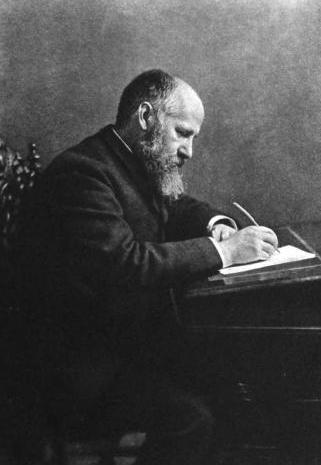 Horace Scudder, 1903In which I interview myself on National Novel Writing Month (NaNoWriMo)
Horace Scudder, 1903In which I interview myself on National Novel Writing Month (NaNoWriMo)What are you doing National Novel Writing Month* this year, Deborah?
Cheering on my friends. I'll be finishing up revisions on the next Darkover novel, Arilinn. Revising is a very different process from drafting. I find that drafting goes better when I do it quickly, so I don't get caught in second-guessing myself or editing as I write. Both are recipes for disaster and paralysis. Revising, on the other hand, does not reliably produce any measurable result in terms of pages or words. I dive into it and call it quits every day when my brain won't function any longer.
How does NaNoWriMo compare to real writing?
Writing is writing! Every writer does it a little differently, and I think most of us change from project to project and also over the course of our careers. Challenges, whether novel-length or short-length, can be fun or oppressive, pointless, or a marvelous way to jump-start a new story.
Doesn’t it bother you when hundreds of thousands of people every year turn your career, the dream job you’ve worked at for 16 years, into some kind of game?
You say "game" as if it's a bad thing. If some aspect of writing isn't fun -- and there are wonderful professional writers who hate to write but love to have written -- then why do it? The community-building that happens during NaNoWriMo is one of its more attractive aspects. Writing is a solitary activity, so it's wonderful to have those "hundreds of thousands" of compadres cheering you on.
Sorry. Do you think it’s possible to write a good novel in 30 days?
Yes and no. Some writers can produce a solid first draft in a month, so that's the yes part. On the other hand, I'm skeptical of any first draft, no matter how long it takes, being "a good novel." I suppose some writers do so much planning and so much reflection on each sentence that their first drafts-on-paper are really third-drafts-in-the-mind. In the end, though, the goal is not to produce a good novel but to write quickly and and consistently and to push through to the end.
Isn’t the emphasis on quantity over quality a bad thing, teaching participants to write crap?
Most writers don't need to be taught how to write crap. We do that very nicely all on our own, thank you. However, writing challenges can teach us to get the story down on paper (or phosphors), which is a necessary first step to a polished final draft. The rewards of actually finishing a novel draft, no matter how much revision it will need, should not be underestimated. Even if that novel is indeed crap, it is finished -- the writer now knows that he or she is capable of completing it. That in itself is worth celebrating.
Another thought on crap. If you aren't writing it and you never have, you aren't doing your job. You aren't taking chances or pushing edges or just splatting out what's in the back of your semi-conscious mind. You are allowing your inner critic to silence your creative spirit.
Eric Rosenfield says NaNoWriMo’s whole attitude is “repugnant, and pollutes the world with volumes upon volumes of one-off novels by people who don’t really care about novel writing.“
I seriously doubt that what is wrong with this world is the surfeit of aspiring novelists. And I can't imagine why anyone would put herself through NaNoWriMo if she didn't 'care about novel writing.' Good grief, if you want to be irate about Bad Things In The World, there are plenty of issues out there, things that actually impact people's health, liberty, and lives. Too many one-off novels is not one of them.
Well, what about Keith DeCandido’s post, wherein he says NaNoWriMo has nothing to do with storytelling; it teaches professionalism and deadlines, and the importance of butt in chair?
Can storytelling be taught? I'm not sure. Yep to the other parts.
Fine, what do you think NaNoWriMo is about?
Why is it about anything than a community of people hell-bent on crash'n'burning their way through a short novel in a month? That makes more sense than it being a nefarious conspiracy.
Any last words of advice, Ms. Very Important Author?
I'd love there to be a parallel track for those of us who have other deadlines, such as revisions or finishing in-progress novels. Certainly FiMyDaNo (Finish My Damned Novel) fits the bill, and I encourage anyone in mid-draft to jump in. Revisions, at least mine, mean taking notes, cogitating, making flow charts of structure, correcting maps, ripping out chunks and shoving them around, not to mention generating piles of new prose. These all count. The thing with revisions is that sometimes a lot of thinking and a small amount of actual wordage change -- if it's the right change -- counts for a solid day's work. It's exhausting, too. So maybe the goal is, "I will think about my revisions every day this month."
Okay, Ms. Interviewer, if you're not doing NaNoWriMo, what are your goals for this month?
*November 1 - November 30National Novel Writing Month, also known as NaNoWriMo is a month-long creative writing challenge that takes place every November. During the month participants from all over the world are challenged to write a 50,000 word first draft of a novel.
October 16, 2023
GUEST BLOG: Sherwood Smith on Monarchy in Fantasy
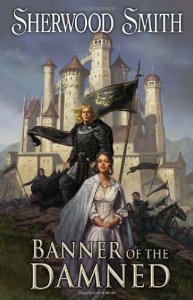 What is it with fantasy stories and monarchies? Isn't there any other form of government?
What is it with fantasy stories and monarchies? Isn't there any other form of government? Two words, power and privilege.
What’s not to like?
What’s not to hate?
Whatever those words evoke to us, it’s usually not boredom. Human beings are hierarchical. You take any group, no matter how determined they are to interact with sensitivity and equality, and a leader somehow emerges. That’s in situations that have the luxury of safety. In emergencies or danger, people turn desperately to anyone who can show them the way out, whether it’s by fighting or fleeing. The successful commander who becomes monarch is as old as history.
Monarchs make government personal, and most readers want stories about people more than they want stories about the function of politico-economic theory, for pretty much the same reason people at work gossip about the boss’s likes, dislikes, and private life. The doings of people in power are interesting, especially when they can impact you, but even when they won’t. Look at all
the celebrity chasers busily reporting on the often fatuous actions, opinions, marriages and breakups of our king-substitutes, actors.
We moderns seem to prefer stories about kings and queens from the days when monarchs were colorful figures in preference to today’s reclusive royalty who, wearing business suits like everyone else, appear only for photo ops and ribbon-snipping. The old kings had more power, but they also had to generate their own PR by looking like kings: when they traveled past you, with outriders and banner snapping and horses caparisoned to a fare-thee-well, you knew a king was passing.
I have heard people on science fiction panels scoff at SF and F about monarchs, but the truth is that for most of human history, until very recent times, monarchy of some kind or another constituted the outer form of government. And as we know even in recent history, leaders who called themselves by other titles, whether president, Führer, chairman, or Dear Leader, functioned pretty much in all other respects as monarchs. We know of politicians right now who would very much like to have the power of kings, and are torquing the democratic system to get it.
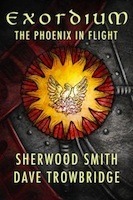
In the simpler, more plot-driven story, the monarch is often nothing more than a factor for action. This leader is all-powerful, without much examination of the nature of that power, or its history, other than perhaps a vague hand wave toward inheritance or even divine right (which can be disconcerting in a story that otherwise contains little reference to religious paradigm). Bad monarchs are mean to peasants, hurt the helpless, and their favorite sport seems to be going out a-conquering. We want to see them brought down. Good monarchs have time to be kind to all, spread peace and plenty, and defend their kingdoms against the invaders. We want to see them preserved as a force for order.
In more character-driven stories, monarchy itself is examined, its features and bugs. Character-driven SF and F novels examine the friction between various powerful interests within a kingdom, whether or not the story includes a threat from without. They illustrate the effects when the nature of monarchy changes.
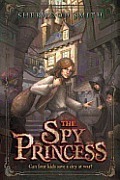 Stories about monarchs have been around as long as there have been monarchs. As far as fiction is concerned, it was Sir Walter Scott who first gave us novels about the doings of kings and legendary heroes from the perspective of ordinary people. The ancient fascination with those in power still grips the imagination, but equally interesting can be the attitudes of the governed. What makes someone willing to bend his knee to the monarch? To kill for him or her? What is the personal cost of that much power?
Stories about monarchs have been around as long as there have been monarchs. As far as fiction is concerned, it was Sir Walter Scott who first gave us novels about the doings of kings and legendary heroes from the perspective of ordinary people. The ancient fascination with those in power still grips the imagination, but equally interesting can be the attitudes of the governed. What makes someone willing to bend his knee to the monarch? To kill for him or her? What is the personal cost of that much power? Finally one comes full circle, to the hero’s tale, wherein the ordinary person gains a crown.
Sherwood's latest book, Banner of the Damned, is about the personal cost of power, and whose next, a middle grade fantasy called The Spy Princess, is about revolution!
When twelve-year-old Lady Lilah decides to disguise herself and sneak out of the palace one night, she has more of an adventure than she expected--for she learns very quickly that the country is on the edge of revolution. When she sneaks back in, she learns something even more surprising: her older brother Peitar is one of the forces behind it all. The revolution happens before all of his plans are in place, and brings unexpected chaos and violence. Lilah and her friends, leaving their old lives behind, are determined to help however they can. But what can four kids do? Become spies, of course!
Find more of her ebooks (and a free short story) at Book View Cafe.
October 13, 2023
A Few Random Book Reviews
N.K. Jemisin, The Hundred Thousand Kingdoms. Despite all the fuss over this debut fantasy
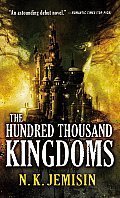 novel, it took me a while to pick it up. I'm not sure what I can usefully add to what has already been said, except to say that the praise is richly deserved. There's a bit of a bobble at the very opening, for me, at least, but that is undoubtedly a matter of taste and it doesn't last long. Very cool stuff about a castle that's a whole city, byzantine schemes and some very unpleasant, ruthless people, a few enslaved and therefore resentful gods, a heroine on the track of her mother's killer, and occasional moments of stunning compassion. Very shortly, I was immersed and am now looking forward to reading more by Jemisin.
novel, it took me a while to pick it up. I'm not sure what I can usefully add to what has already been said, except to say that the praise is richly deserved. There's a bit of a bobble at the very opening, for me, at least, but that is undoubtedly a matter of taste and it doesn't last long. Very cool stuff about a castle that's a whole city, byzantine schemes and some very unpleasant, ruthless people, a few enslaved and therefore resentful gods, a heroine on the track of her mother's killer, and occasional moments of stunning compassion. Very shortly, I was immersed and am now looking forward to reading more by Jemisin.Connie Willis. Blackout/All Clear. Time-traveling historians visit the London Blitz, get trapped
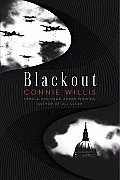 there, try to find a way home without changing history and thereby creating a future in which their world (and their time machine) does not exist. All done up in inimitable Connie Willis style. This two-part novel is (fortunately or unfortunately, according to your taste) downright chatty, with lots of conversations in which characters alternate between discussing the minutia of surviving in a dangerous historical period and trying to figure out either how to get home, why their failsafe return strategies aren't working, and whether they are inadvertently changing history. If you like dialog, you'll relish them, but if you find this sort of detail tedious, the story will be slow going. Crucial details are planted in the midst, and if your eyes are glazing over, you'll miss them. Another objection I've heard, although it wasn't an issue for me, was the
there, try to find a way home without changing history and thereby creating a future in which their world (and their time machine) does not exist. All done up in inimitable Connie Willis style. This two-part novel is (fortunately or unfortunately, according to your taste) downright chatty, with lots of conversations in which characters alternate between discussing the minutia of surviving in a dangerous historical period and trying to figure out either how to get home, why their failsafe return strategies aren't working, and whether they are inadvertently changing history. If you like dialog, you'll relish them, but if you find this sort of detail tedious, the story will be slow going. Crucial details are planted in the midst, and if your eyes are glazing over, you'll miss them. Another objection I've heard, although it wasn't an issue for me, was the romanticizing of a very grim, difficult period, sort of "Blitz as tourist attraction." Especially when coming from Brits whose families lived through that terrible time, this is a valid concern. As a writer, I understand the challenge of how to use historical events (that have their own cultural context and recent memory) as a jumping-off point for a speculative tale while remaining respectful of what those events meant to the people who actually experienced them. For me, the "alternate history" flavor to this story made it seem as if I were reading not about the actual historical events but about a time and place as seen through the eyes of retroactive (and unreliable) visitors. Even so, it's important to keep in mind that just because Willis depicts events vividly does not mean they are historically accurate. This is, after all, speculative fiction, not serious scholarship.
Marissa Meyer. Cinder. Retellings of classic fairy tales are hot stuff these days. This one (whose
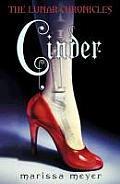 title leaves no doubt as to which story it is) is a particular delight because not only is Cinder a cyborg (a secret she's at pains to disguise because of rampant anti-cyborg prejudice) but she's a computer mechanic. Smart, capable, and not at all interested in the attentions of Prince Charming. She has better things to do with her life than attend a ball -- like plan her own escape from servitude. One of the twists that most delighted me was the affection and loyalty between Cinder and one of her stepsisters, her only human friend.
title leaves no doubt as to which story it is) is a particular delight because not only is Cinder a cyborg (a secret she's at pains to disguise because of rampant anti-cyborg prejudice) but she's a computer mechanic. Smart, capable, and not at all interested in the attentions of Prince Charming. She has better things to do with her life than attend a ball -- like plan her own escape from servitude. One of the twists that most delighted me was the affection and loyalty between Cinder and one of her stepsisters, her only human friend.Trey Shiels (Linda Nagata), The Dread Hammer. I discovered Linda Nagata as a science fiction writer, inventive and thoughtful. Her fantasy is no different.
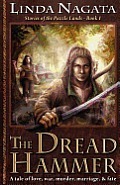 This is not a story to be read superficially, for my first impression was a series of unsympathetic characters who deserved whatever is coming to them. The protagonist is a young man with the magical ability to move invisibly from one place to another and a penchant for slaughter; emotionally, he's an infant, as apt as not to casually eliminate anyone who might pose a problem in the future. But Nagata is too skilled and subtle a storyteller to resort to stereotypes. Nothing is as it seems and how we view characters -- and their own capacity for self-knowledge and change -- evolves along with the story line. Who is the monster here? Who is the hero? Can love and loyalty change people? Or is it the other way around, that people warp the meaning and uses of devotion and honor? There are no simple answers here, only a story that is deeply respectful of the reader's ability to draw his own conclusions.
This is not a story to be read superficially, for my first impression was a series of unsympathetic characters who deserved whatever is coming to them. The protagonist is a young man with the magical ability to move invisibly from one place to another and a penchant for slaughter; emotionally, he's an infant, as apt as not to casually eliminate anyone who might pose a problem in the future. But Nagata is too skilled and subtle a storyteller to resort to stereotypes. Nothing is as it seems and how we view characters -- and their own capacity for self-knowledge and change -- evolves along with the story line. Who is the monster here? Who is the hero? Can love and loyalty change people? Or is it the other way around, that people warp the meaning and uses of devotion and honor? There are no simple answers here, only a story that is deeply respectful of the reader's ability to draw his own conclusions.Franny Billingsley, Chime. In some ways, this YA Norton Award Finalist reminded me of one of my favorite books, Charmed Life by Diana Wynne Jones. Part of the resemblance is the way magic is woven into a Victorianeque sort-of-steampunk setting, but part is the interplay between how the young, unreliable narrator sees herself (in this case, she must keep secret that she's a witch and her anger can harm the people she loves) and how others see her -- how I as the reader come to see her.
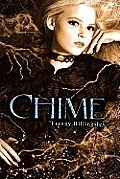
The teen years are fraught with self-uncertainty, at least mine were. We're trying to figure out who we are, what we're like, what we have control over. We tell ourselves and others stories about ourselves, and not all of them are true. What are the consequences of lies we know we're telling? What about those lies other people have told about us that we actually believe? Briony, the narrator of Chime, has more than her share of secrets. She also has a keen intellect, an unquenchable sense of humor, and a willingness to sacrifice herself for those she loves that connects with not just teen readers but those of all ages.
Many books contain a scene that in itself is "worth the price of admission." Chime contains an encounter with flying witches on the wild swamplands. When the witches take to the air, their lack of undergarments is made quite clear as they waggle their naked backsides at the astonished hunters (who then have the wisdom to not mention this aspect in their report).
Marianne de Pierres, Glitter Rose. I found this little collection of short stories in my goodie bag at the last World Fantasy Convention. Otherwise, I might never have known about it, as it's from a small print run by an Australian publisher (Twelfth Planet Press). These are exquisite stories, understated in the best sense of the word, with weirdness and mystery (and a little drama here and there) woven into them. Most of them follow the narrator as she arrives on a tropical island, seeking solace for a deep wound that she can't even bear to describe. The island, however, is subject to waves of wind-borne spores that generate "exotic, often terminal afflictions" for anyone who cannot afford the expensive antidote. As Tinashi settles into her self-imposed exile, she develops relationships with the island's inhabitants, layer by layer exposing their secrets, her own, and those of the tidal spores.
With th [image error] e last of the sunset...strange phosphorescence claimed the sand, colorless at first and rapidly changing to a carpet of tiny, shining, rose-coloured grains. Something about them compelled me to hasten to the beach and run them through my fingers and toes.
I must have stirred, because Geronimo and Arthur Wang each laid a hand on my arm.
"The spores are active," Arthur Wang explained. "Walking on the beach during glitter rose can be..." he trailed off.
Geronimo took it up, his voice a quiet boom. "What the Prof. Is saying, Tinashi, is -- if you walk on the beach at glitter rose, you might has well feed your Tyline to the fish. And you don't know what the spores will do. How they will change you. Everyone is different. The locals, I mean. Some things you can see, like the eyes and the water retention in the forehead. Others it's only on the inside. They're the ones to watch. You never know about them. By heaven, it's tempting though." His voice brimmed with emotion in that last sentence, like a man on the limit of endurance.
I glanced among them then, and saw the feeling mirrored in their faces. Longing. And fear.
I gulped my pink champagne deeply and felt the tingle waken dead places in me.
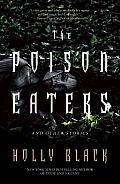 Holly Black, The Poison Eaters and other stories. I'm all over the place with Holly Black novels; loved Tithe, hated The White Cat. I approached this collection with a bit of trepidation, but found the stories to be well-written, quirky, sometimes a tad gruesome or sad or pessimistic, but always engaging. I think the key word is consistent, and it was quite wonderful to see how an author maintains literary quality and sensibilities, a moral compass as it were, regardless of genre or plot or character specifics. I think that's the mark of a professional who takes her craft seriously, and is well worth paying attention to.
Holly Black, The Poison Eaters and other stories. I'm all over the place with Holly Black novels; loved Tithe, hated The White Cat. I approached this collection with a bit of trepidation, but found the stories to be well-written, quirky, sometimes a tad gruesome or sad or pessimistic, but always engaging. I think the key word is consistent, and it was quite wonderful to see how an author maintains literary quality and sensibilities, a moral compass as it were, regardless of genre or plot or character specifics. I think that's the mark of a professional who takes her craft seriously, and is well worth paying attention to.Daniel O'Malley, The Rook. This is subtitled, On Her Majesty's Supernatural Secret Service, and it's part amnesiac-female-James Bond With Cthulhu, part mystery, and part Secret Alchemical Societies At War. Myfanwy Thomas, a highly-placed member of HMSSS, wakes up with a badly bruised face, a circle of dead bodies, and no memory of who she is or what
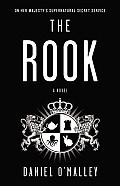 happened. Being the insanely organized person she was, she's written a series of letters to herself, explaining what she does for this secret agency and how she came to believe that her memory would be wiped clean on this particular date. Then it's up to "new" Myfanwy to not only discover the traitor in the agency, but to keep up the pretense of being who she is. Unfortunately the "old" Myfanwy was quite a timid doormat, and the "new" version stands up for herself, making for some interesting situations. This also got me to wondering about the reasons amnesiac characters work (or don't work). At their best, they evoke resonances of our own experiences trying to figure out who we are and how we got here. (At worst, of course, the amnesiac hero/ine represents the blankness of the author's imagination...) The Rook is engaging and great fun, if a little heavy on the bodily fluids in places.
happened. Being the insanely organized person she was, she's written a series of letters to herself, explaining what she does for this secret agency and how she came to believe that her memory would be wiped clean on this particular date. Then it's up to "new" Myfanwy to not only discover the traitor in the agency, but to keep up the pretense of being who she is. Unfortunately the "old" Myfanwy was quite a timid doormat, and the "new" version stands up for herself, making for some interesting situations. This also got me to wondering about the reasons amnesiac characters work (or don't work). At their best, they evoke resonances of our own experiences trying to figure out who we are and how we got here. (At worst, of course, the amnesiac hero/ine represents the blankness of the author's imagination...) The Rook is engaging and great fun, if a little heavy on the bodily fluids in places.October 9, 2023
Pad Thai, Meatloaf, and Learning to Write
I learned to make Pad Thai from Sunanta, a Thai exchange student whom we hosted some years back. Her mother, perhaps skeptical about American food in general and those crazy vegetarians in particular, used to send her care packages that included the dry rice noodles and packages of dry seasoning (which were undoubtedly mostly sugar and salt, although as I don't read Thai, I can't say for sure). Sue would cook and I would watch and learn. She made hers with nappa cabbage, carrots, and shrimp. (The packages had sesame seeds to sprinkle on top.)
What I learned was this: Pad Thai is like meatloaf. Every family has their own recipe and the best way to learn is to watch mom and then try it yourself. Chances are, you won't be able to duplicate the exact recipe anyway, and once you've figured out your own taste, you won't want to. You'll make it your own.
It strikes me that learning to write is a bit like this. It's been said that writing cannot be taught but it can be learned. One way we learn is by observation. Watching mom at the stove. Reading the best literature we can find. Then, into the kitchen with us! We try to follow the recipe, only to find out that sweet basil isn't the same as Thai basil, and what the heck is asafoetida, anyway, and we can't get that other ingredient. And we have so much of this other stuff fresh out of the garden, or the farmer's market, or this other stuff has been frozen for 6 months and has to be eaten, and besides kid/spouse/guest won't/can't eat this other thing... We try something. And something else. We see what happens. We curse and we sweat and we try again; we ask, "What do you think? Is it the real thing?" (The reactions of our fellow writers does not usually involve projectile vomiting, but can be just as distressing.)
And then we arrive at that magical dinner when the Pad Thai or the meatloaf is completely and utterly itself...and we realize it isn't like any other meatloaf or noodle/vegetable/sauce dish. It's something that's never happened before. It's ours.
Bon appetit!
October 2, 2023
RevisionLand; Or, Aliens/Robots/Dry-Towners/Mad-Scientists Ate My Brains
 Gillray, "The Headache," 1819One of the delights of living with a fellow writer occurs when I'm sitting at the dinner table, trying to wrap my mind around 200 or 500 pages of text. He raises an eyebrow, Spock-style. I say, "Revisions." And he gets it. I am not only not flying with the rest of the ducks at this moment, I'm nowhere near this planet. I'm in RevisionLand.
Gillray, "The Headache," 1819One of the delights of living with a fellow writer occurs when I'm sitting at the dinner table, trying to wrap my mind around 200 or 500 pages of text. He raises an eyebrow, Spock-style. I say, "Revisions." And he gets it. I am not only not flying with the rest of the ducks at this moment, I'm nowhere near this planet. I'm in RevisionLand.Some writers look at me as if Aliens/etc., really have eaten my brains when I say I love to revise. Everyone's different. I'm not a writer who uses detailed outlines. I know some who do, one or two 3 x 5 cards per scene. I work from an outline that tells me I need to get from here to there and this is the emotional tenor of this story hinge, and that is how I want to climax to come together. How I get from a blank screen to ### (the end, in writerese) is an adventure. The story doesn't happen for me in the first draft, but in the revisions.
Anyone can write a draft. Just put one word after another, rinse and repeat 100,000 times. Presto! This is a time for me to throw every wacky notion that pops into my brain on the page, as long as it has some vague relevance to that outline. And many that don't. So revising involves clearing away all that dead wood and stuff that belongs in another book and much more that is just plain idiotic. Along the way, there are absolute gems I had no idea were there. They are the true rewards of allowing myself to create sloppy rough drafts. (Another is that for me this is an effective method of getting my internal critic/editor out of the picture before she muzzles my muse.) Somewhere early in this slash and burn process, I start to get a bigger picture, not of what I thought the book was about (I'm wrong) but what it really is and, what's more important, what it might become. This usually involves the above-mentioned holding-of hundreds of pages in my head all at once, because here is where the pattern emerges.
So I'm about half-way through the first revision-pass of Arilinn, the next Darkover book. It involves an adventure, and also a mystery. I have at least three parallel threads: what the character does; what the character finds out (and in what order, and what he knows that everyone else does not and vice-versa); and how the character changes. If I were smart, I'd do a read-through with a flow chart for each thread, in different colored inks. But I'm impatient, so I'm making changes and going oops, this violates the set-up 5 chapters back and then wondering if I should go back and fix the set-up, or fix what I've got now so it's congruent with what's come before, or maybe both are wrong, but wait, he couldn't have come to that conclusion because he doesn't have this other piece of information, which he will find out in the next chapter....
At this point, there is nothing for it but to take the dog for a long, long walk.
Having come back, hot and sweaty and thought-out (but with a very happy dog), I have regained a sort of temporary sanity, enough to realize that the next step is the Magic Notebook, in which I reason things out on paper, usually to splendid effect.
When I was a new writer, I'd be in despair at this stage. I'd be sure I'd never sort it all out, that I'd just wasted a year on a hopeless piece of inconsistent, irrational drivel. But I've been through this process enough times to know that not only is it a temporary passage, but a necessary one. Moments of doubt keep me working to make the story better, digging to find the root of what doesn't work. Those treasures I mentioned above remind me that the story is worth the effort.
And every once in a while, I read a sentence, a phrase, a paragraph, and go, Wow, that is really good. And I wrote it.. If I had a magic wand to transform the whole book into equal quality, I would make a fortune, but as it is, I'm stuck with this workhorse process, slogging through, hanging on to hope and past experience by my fingernails. If it's your process, too, we're in great company.
September 29, 2023
Here I Fell Asleep: Books I Couldn't Finish
This is about books I didn't finish. Recently, I've been more diligent about posting review of books I liked and it just occurred to me that it's as important to look at books that didn't work for me...and why.
First, a good bedtime book: Trolls in the Hamptons by Celia Jerome. Lightweight, but enjoyable. It's grand for bedtime because there's just the right balance between plot and romance and cozy everyday stuff. This is not an easy trick to pull off, and I was not surprised to discover, when I flipped to the copyright page (you see what a devious and suspicious mind I have!) that Celia Jerome is actually Barbara Metzger, who's written dozens of Romances, including a slew of Regencies, and has been an editor and worn a bunch of other literary-type hats. In other words, she knows what she's doing. The book has that sense of utter solidity in the best sense; no wobbles, no blind-sides. You're in the hands of a thorough professional. And the world and characters are interesting enough that I'll be looking for the next volume.
Now the stack I didn't finish:
Holly Black. White Cat (The Curse Workers). I really wanted to like this one. Holly Black's a terrific YA writer and I've loved her other work, particularly Tithe. I made it about half way through and then gave up. The prose is solid (again, a good thing), the premise worth exploring. Magic comes in the form of "curses" that run in families -- luck, glamour...death. Despite all sorts of laws to identify and control those with these abilities, Mafia-style families are basically running the world. I found the world so dreary and the characters so unsympathetic, I was sorry they had to live in a such an awful place but really none of them was trying to make it better, so I suppose they deserved it and wouldn't I really rather check out some other book...
Laura Quimby. The Carnival of Lost Souls (Handcuff Kid). In this YA novel, I cared about the characters, I liked the nifty spooky stuff that you just know is going to come out and bite the hero, the references to Houdini, direct and not, were fun... but the story-telling was so ponderous and clumsy that irritation eventually overcame interest. I made it through about 100 pages in before I set it aside. The prosecraft might not pose a problem to the target adolescent audience...but even middle-school boys deserve better writing.
Kate Thompson. The White Horse Trick. This is a sequel to The New Policeman, that won all sorts of awards, but which I haven't read. The opening was great: "They came in the dead of night when the famiy was sleeping. If there had been any dogs left, they might have heard the men approaching, but there weren't. There hadn't been dogs there for years." After such a skillful opening, descending into one laborious "as you know, Bob" conversation after another just wore me down. And adults should not talk like kids. Horribly unpleasant world, characters I could root for, but an infuriating let-down and incompetent bad guys. I guess I have little patience when an author demonstrates a high level of craft and then descends to sloppiness.
Jerry and Sharon Ahern. Written in Time. I gave up after about 10 pages of a man and his wife driving along a country road, having one of the most idiotic conversations I've read in a long time. If it had been meant to be funny, that would have been one thing. As it was, the prose was laden with prosaic nonsense, distracting and irrelevant details, and worse of all, the pervasive sense of copying copies of other books. By the time the wife, who was "nearing the end of what she called 'her first trimester' " (as if she had invented the term, or perhaps she was mistaken in calling it that), smoothed her skirt (ack! shades of '50s Romances), I was done. The length of the book -- 644 pages -- did not inspire me to plow on. Might have been a good premise, but I could not get past the Lucky Strikes, maroon suits (hers), single-breasted gray suits (his), or '63 Cadillacs, coupled with not a shred of where-are-we-going-and-why, all on the first page.
September 25, 2023
Author Interview: Samaire Wynne
I recently had a chance to chat with Samaire Wynne, the author of the "Meridian Pack" series, the first volume of which, Awakening Fae: Fated Mates, I reviewed here.
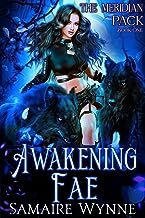 Deborah J. Ross: Tell us a little about yourself. How did you come to be a writer?
Deborah J. Ross: Tell us a little about yourself. How did you come to be a writer? Samaire Wynne: Well, I have loved books andreading since I was a very young child. Wanting to create stories and bookscame naturally from that.
DJR: What inspired your book?
SW: I love urban fantasy and have read many wolf-shifter books, and Ithought I’d try my hand at that genre. I thought I would be taking a break fromwriting about fae creatures, but they crept into my story anyway!
DJR: What authors have most influenced your writing? What about them do you find inspiring?
SW: Madeleine L’Engle, Walter Farley, SusanCooper, and Neil Gaiman have influenced me the most. They write about utterlyfantastical places and characters, and I loved getting lost in their stories.They taught me how to write.
DJR: Why do you write what you do, and how does your work differfrom others in your genre?
SW: I lovewriting fantasy: It’s my favorite genre. I write about characters that myreaders end up caring deeply about, especially when the characters find afamily of friends. “Found Family” is the theme running through every book I’vewritten. As to how my work differs from others in the Urban Fantasy genre, I amnot sure. There are some really fantastic writers and storytellers out therecreating some amazing books. I hope I stand out to readers. I love world-buildingand character backstories, and I love creating stories. I don’t think I’ll everstop.
DJR: How does your writing process work?
SW: To begin a new book, I always write adetailed outline. A typical 100,000-word book will have an outline at leastfive to seven pages long detailing character quirks, motivations, andbackgrounds, and outlining the entire story from start to finish. I write earlyin the morning. Most of the time, I use the Pomodoro Method and write in 25-minutesprints. I try to see how many words I can write during each session, and Iusually get so involved with the story that I write well into the afternoon.
DJR: What have you written recently? What lies ahead?
SW: I’m currently writing the sequel to AwakeningFae. It’s titled Ruthless Savage and takes the Meridian Pack intoEurope to investigate why they’ve become the target of the reigning WolfCouncil, the governing body that oversees all wolf-shifter packs.
DJR: What’s the strangest or most touching fan mail you’ve everreceived?
SW: I’ve received manywonderful letters, but I cherish the ones that say my stories have inspired theperson to write their own.
DJR: What advice would you give an aspiring writer?
SW: Read as much as you can and as widely aspossible. That’s how you learn. When sitting down to write, push all doubt andworry aside and just get the story down on paper. You can always fix it later,but you must get it down first. I also recommend brainstorming what your storyis about and writing an outline for it. This makes the process much easier andpulls away the mystique that often produces anxiety, which can freeze a writer.
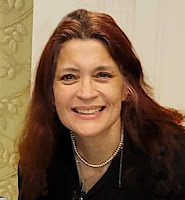
Samaire Wynne is a Puerto Rican author of over 20 novels in variousgenres, including horror and urban fantasy. She is Editor in Chief of BlackRaven Books. She has been writing professionally for over 11 years.
A longtime Californian, you can find her skulking about in southernVirginia. If you were to visit her at twilight, she might serve you flower teaor butter whiskey on her back deck. If she excused herself and strolled intothe forest, you might be tempted to wander after her. Past a stream, you’d seea stone well at the edge of her property, and you might hear voices coming fromdeep inside.
If you were to trip and tumble down the embankment, youmight be stolen away by faeries keen to offer you a cookie or a bit of mead ina flower cup.
And if you were to drink it, you’d awake to find that ahundred years had passed...



